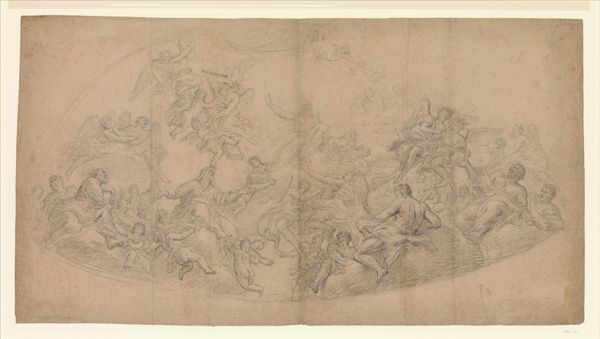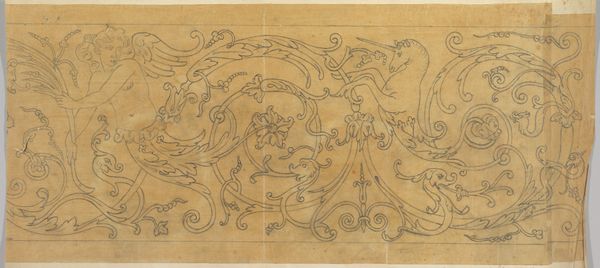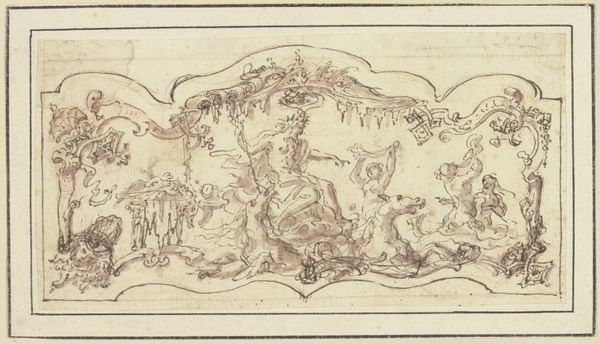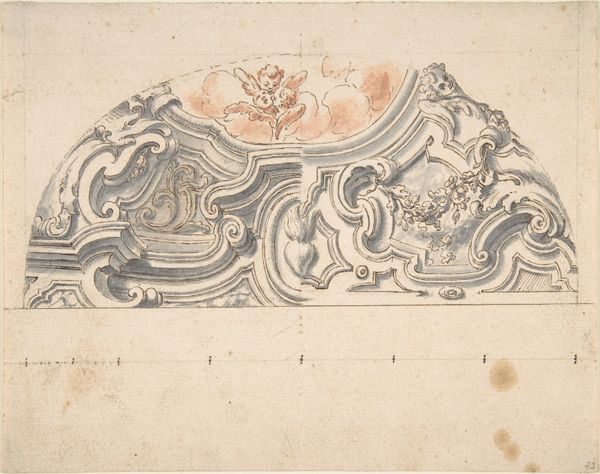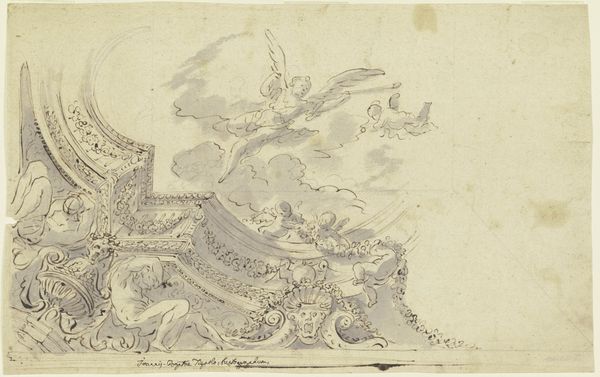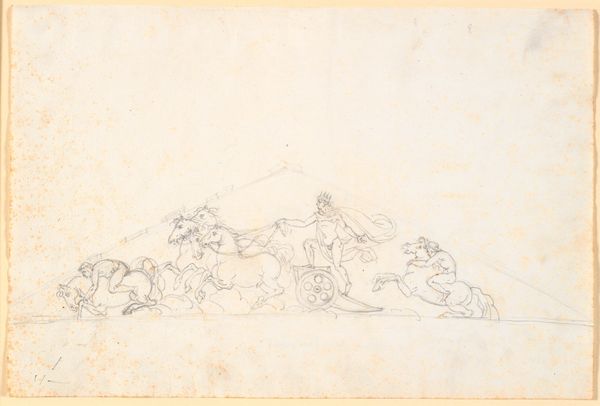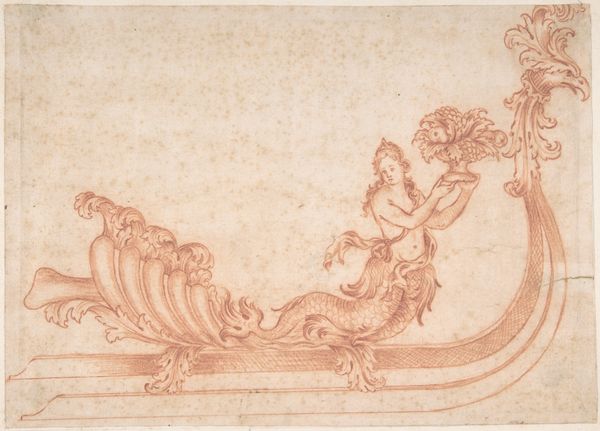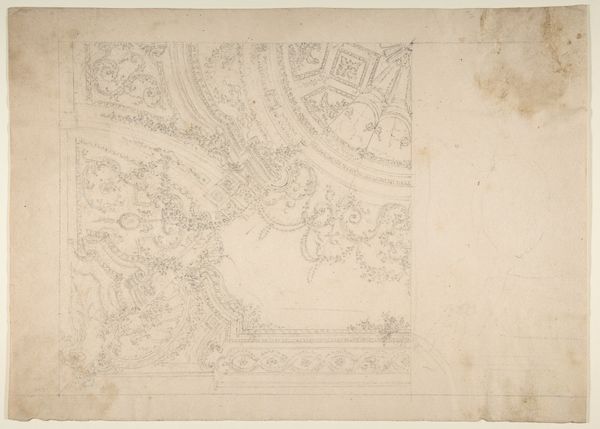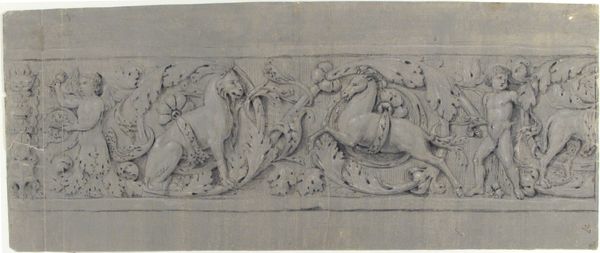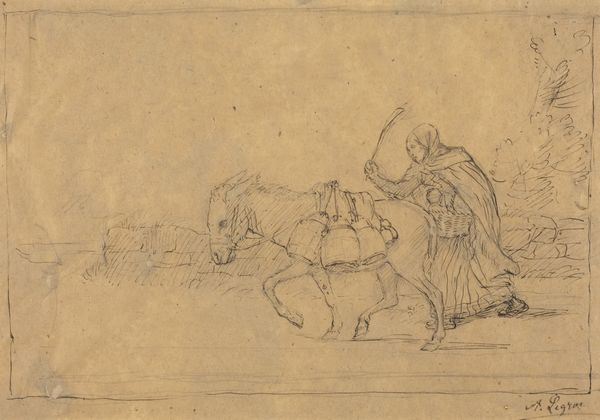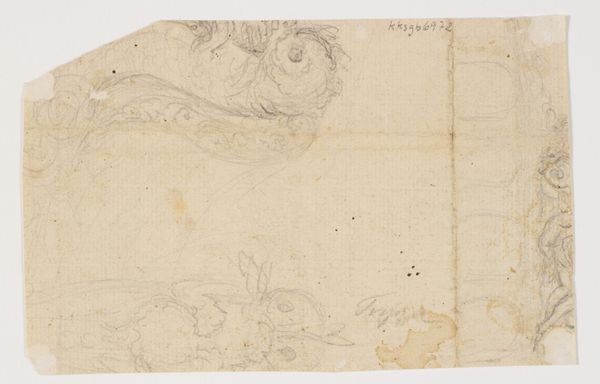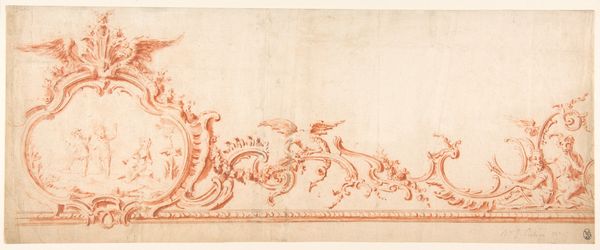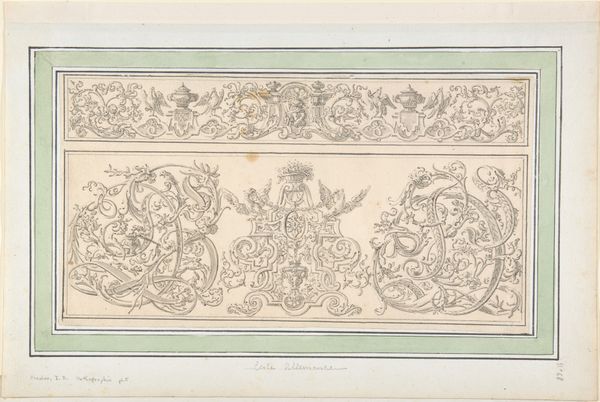
drawing, print, pencil
#
drawing
#
baroque
# print
#
etching
#
pencil
Dimensions: 13 1/4 x 29 1/2 in. (33.7 x 75 cm), on two glued sheets of paper.
Copyright: Public Domain
Curator: Let's consider this drawing from the late 17th century titled "Design for a Carriage" by an anonymous artist. It combines pencil, etching, and possibly other printmaking techniques. Editor: It looks quite delicate and elaborate. I immediately notice the ornate details, almost excessive—do you get a sense of pure baroque ostentation? I imagine this as a statement of immense wealth, almost performative. Curator: Precisely. Carriages in this period became significant displays of power and status. The aristocracy used them as moving stages, visually reinforcing their position within the rigid social hierarchy. Think about how something as functional as transport was turned into a propaganda tool, really. Editor: So, how does this specific design communicate those messages? What sort of anxieties and aspirations were being worked through during the period when a carriage design becomes such a detailed statement? The bells… they evoke ideas about excess as spectacle. Curator: Note how the drawing style also reinforces this message. The very lightness and sketchiness imply the ephemeral and aspirational, even fantasy. Etching and pencil would’ve allowed for a mass-produced design to be pitched to wealthy patrons. One might almost read this as a kind of…real estate brochure, showing off what luxury and power looked like. Editor: That’s interesting because the lines almost dissolve. The very act of drawing—its reproducibility through etching—hints at an underlying tension in making a statement of unique luxury for the few when that statement itself gets distributed more broadly. It’s trying to bridge a tension between elitism and early-modern methods of circulation, maybe. Curator: Perhaps that contradiction fueled the need for increasingly ornate designs. If everyone could potentially see your carriage design, how do you ensure your physical carriage remained singular and unmatched? It brings to light a fascinating tension between artistic dissemination and the actual politics of conspicuous consumption in the 17th century. Editor: The piece really highlights the societal pressures encoded even in what might seem like a purely decorative design, underlining how these forms solidify specific socioeconomic divides. What begins as purely a statement about mobility soon turns into a profound material expression of power. Curator: Absolutely. And examining these visual statements encourages us to examine the political undertones of luxury throughout history and today. Editor: Indeed. Thank you, that provided valuable social contexts and deeper thinking around Baroque-era messaging.
Comments
No comments
Be the first to comment and join the conversation on the ultimate creative platform.

